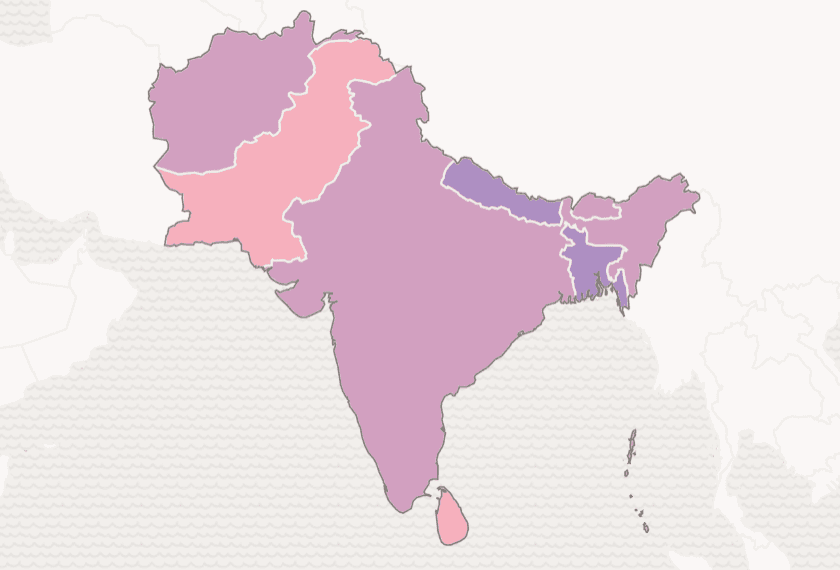Highlighted Stories

Girls on the Frontline: Are girls more likely to marry in conflict?
Beyond the immediate loss of life and injuries, conflicts and humanitarian crises pose many challenges to children: they make finding work harder for parents, disrupt education, increase costs and poverty, all of which weakens the protections that should be in place to keep children safe from violence. In turn, these factors increase girls' risk of child marriage. As previous evidence shows, child marriage is often seen as a way to reduce financial pressures on families or to protect girls from other forms of gender-based violence.
The Child Atlas illustrates this relationship, showing that many countries with high rates of child marriage are also places where a high share of children are affected by conflict (for instance Mali or Central African Republic). But this relationship is not consistent throughout: there are many conflict situations where child marriage is not as high as in more peaceful settings, and vice versa. And while the correlation shown in the Child Atlas can be indicative of a causal relationship – conflict increasing child marriage – we need more elaborate analytical tools to study this in detail.

This was exactly what we did for the Global Girlhood Report 2022 Most studies analysing the impact of conflict on child marriage focus on one particular area and use qualitative techniques, providing invaluable insights into the drivers of child marriage in humanitarian contexts. However, we were interested in quantifying this relationship across a large number of countries to understand how much child marriage might increase as a result of conflict. After almost two years, our analysis has just been published in the academic journal SN Social Sciences.
In this analysis, we first combined data across 56 countries, covering 3.5 million women and 2.1 million marriages. We then linked the household locations of these women to a geographically granular dataset covering conflict events over the last 30 years that shows whether any armed conflicts had taken place during that time and how many people had been killed. Bringing these two sets of information together, to see if child marriages were more prevalent during times of conflict.
Our results showed that girls were 20% more likely to get married if a conflict took place in their area in previous five years. However, this finding hides a lot of variation, with the impacts varying between world regions and countries. You can read the whole study here.
Related stories:
Related stories

How a Soap Opera Helped to Reduce Child Marriage
Child protection (CP)
Child protection (CP)
2025-12-09

Does Insurance Benefit Child Health? Lessons from 38 Countries
Health (HL)
2025-11-19